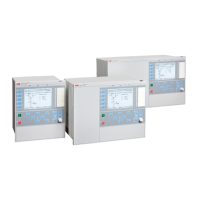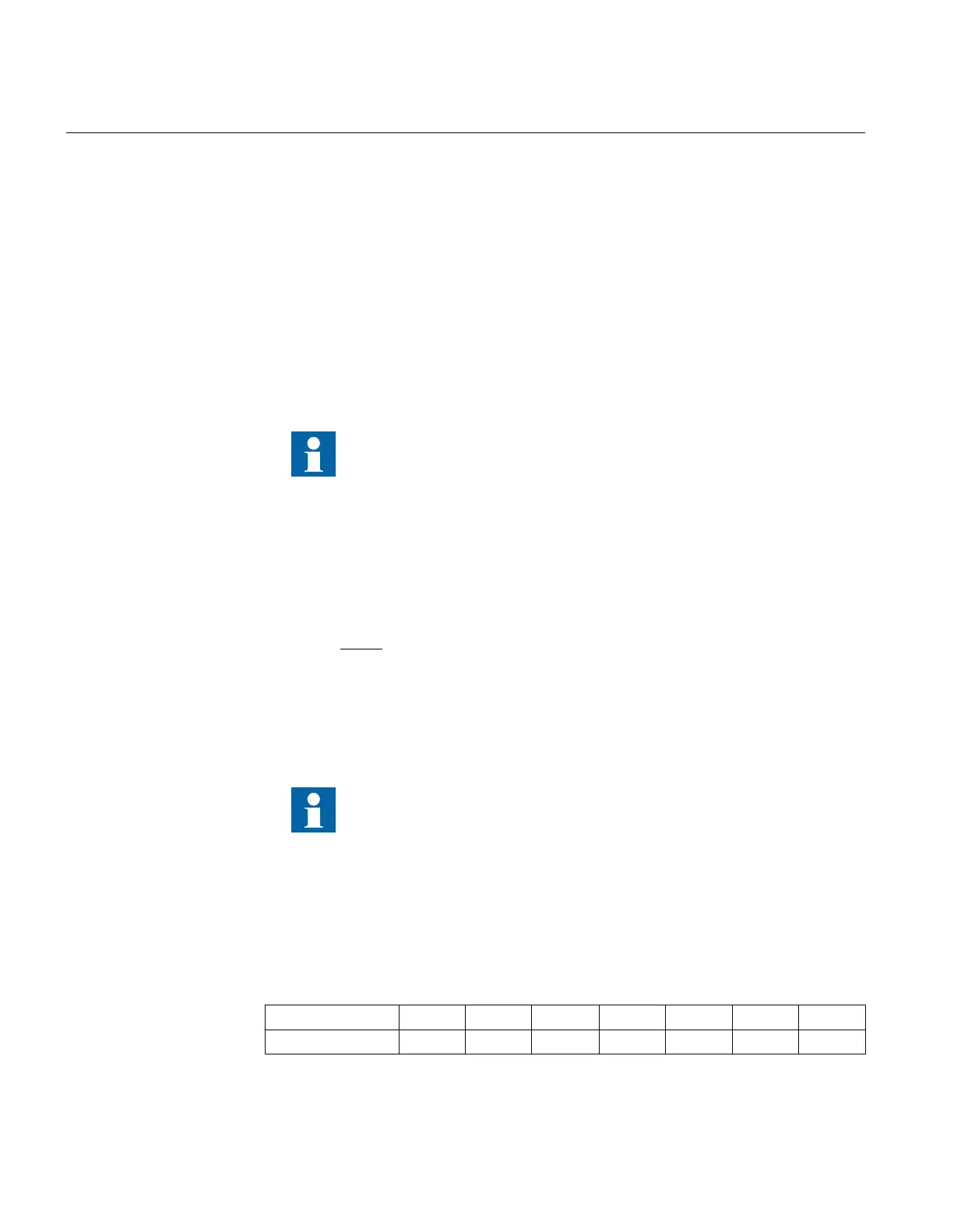4. If any of these signals are used for tripping, signaling and/or local/remote indication
check that all relevant contacts and LEDs have operated and that all relevant
GOOSE messages have been sent.
5. Check that service value from the function for current in phase A, on the local HMI
under Main menu/Test is approximately 382A (that is, 0.763A · (500/1) = 382A).
6. Check that service value from the function for reactive power in phase A, on the local
HMI under Main menu/Test is approximately 169% (that is, 1.3 · 1.3 = 1,69pu =
169%).
7. Stop injection of all currents (that is, set all currents back to 0A).
8. Check that all above mentioned function binary output signals now have logical
value zero.
9. Repeat above steps 1 - 8 for phase B and phase C.
Note that operation of this feature is based on injected current and
internally calculated true RMS values. That means that this feature is also
able to trip for current signals with varying frequency. However due to
relatively complex calculation procedure it is recommended to do
secondary tests only with fundamental frequency current signals.
The following formula can be used to calculate SCB reactive power in per-unit system
when current with different frequency from the rated frequency is injected.
[ ] [ ]
2
rated
injected
f
Q pu I pu
f
= ×
EQUATION2273 V1 EN (Equation 89)
Harmonic voltage overload feature
Note that during testing the harmonic voltage overload feature the reactive
power overload feature or overcurrent feature may also give pickup and
trip signals depending on their actual settings. Therefore it is
recommended to switch them off during this test.
Procedure to test inverse time delayed step:
The following points on the inverse curve are defined per relevant IEC/ANSI standards
for time multiplier value set to k_HOL_IDMT=1.0
UpeakRMS [pu]
1.15 1.2 1.3 1.4 1.7 2.0 2.2
Time [s] 1800 300 60 15 1 0.3 0.12
Section 11 1MRK 504 165-UUS -
Testing functionality by secondary injection
204 Transformer protection RET670 2.2 ANSI
Commissioning manual

